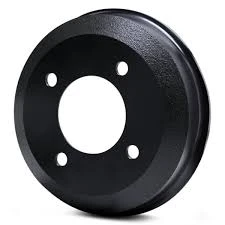what is drum brakes
What Are Drum Brakes?
Drum brakes are a type of braking mechanism commonly used in vehicles, especially in older models and some modern vehicles, particularly on the rear wheels. They have been a fundamental component in automotive engineering for many years, valued for their effectiveness and reliability. To understand drum brakes, we must explore their components, working principles, advantages, disadvantages, and their role in modern transportation.
Components of Drum Brakes
Drum brakes consist of several key components the brake drum, brake shoes, wheel cylinder, return springs, and self-adjusting mechanisms. The brake drum is a cylindrical component that rotates with the wheel, while the brake shoes are curved pieces of material that press against the inner surface of the drum to create friction. The wheel cylinder contains brake fluid; when the brakes are applied, hydraulic pressure forces the brake shoes outward against the drum.
The return springs play a crucial role in ensuring that the brake shoes retract when the brake pedal is released, allowing the drum to rotate freely again. Many drum brakes also feature a self-adjusting mechanism that maintains the proper spacing between the shoes and the drum, ensuring efficient braking performance and extending the lifespan of the components.
Working Principle
The operation of drum brakes can be understood as follows when the driver presses the brake pedal, hydraulic fluid from the master cylinder flows into the wheel cylinder. This action causes the cylinder to expand, pushing the brake shoes outward against the inner surface of the brake drum. The friction generated between the shoes and the drum slows down the rotation of the wheel, effectively bringing the vehicle to a stop.
One of the key features of drum brakes is that they provide a large surface area for friction, which enhances their stopping power. This design allows a drum brake system to handle a significant amount of heat generated during braking, which is crucial for performance and safety.
Advantages of Drum Brakes
what is drum brakes

Drum brakes offer several advantages that make them a popular choice in certain applications. One of the main benefits is their cost-effectiveness; drum brakes are generally less expensive to manufacture and maintain compared to disc brake systems. Additionally, drum brakes tend to be more effective in wet conditions, as their design can limit the accumulation of water on the friction surfaces.
Another advantage is that drum brakes typically have a larger braking surface area than disc brakes, allowing for more efficient heat dissipation during prolonged braking. This property makes them suitable for vehicles that do not require the high-performance stopping power provided by disc brakes, such as light-duty trucks and older passenger cars.
Disadvantages of Drum Brakes
Despite their advantages, drum brakes come with certain drawbacks. One significant disadvantage is their tendency to overheat during extended or heavy braking, which can lead to brake fade, a condition where the brakes lose effectiveness. This is particularly critical in high-performance driving scenarios or when towing heavy loads.
Moreover, drum brakes can be more challenging to service than disc brakes. The complexity of their components and the need for adjustment can lead to increased maintenance time and costs. Furthermore, since drum brakes are generally heavier than disc brakes, they can contribute to a vehicle's overall weight, which may affect fuel efficiency.
The Role of Drum Brakes in Modern Vehicles
While many modern vehicles have shifted towards disc brake systems for their superior performance characteristics, drum brakes still have a place in the automotive industry. They are often found in the rear braking systems of economy cars and some trucks, where cost efficiency and effective braking are essential. Typically, drum brakes are more prevalent in non-performance applications where their benefits outweigh their downsides.
In conclusion, drum brakes are a crucial component of vehicle braking systems, offering a blend of effectiveness, cost savings, and reasonable reliability. As automotive technology continues to evolve, the application of drum brakes may change, but their fundamental principles and engineering design will remain relevant in the discussion of vehicle safety and performance for the foreseeable future. Understanding how they work helps drivers appreciate the engineering that contributes to safe and reliable transportation.
-
Brake Drums for Trucks | OEM-Grade, Factory DirectNewsNov.10,2025
-
High-Performance Brake Drums for Trucks | OEM & ISONewsNov.10,2025
-
Brake Drums Built to Last — OEM-Grade, Balanced for TrucksNewsNov.10,2025
-
Brake Drums for Trucks – OEM-Grade, Durable, Low NoiseNewsNov.10,2025
-
Brake Drums for Trucks | OEM, ISO-Certified, Fast DeliveryNewsNov.10,2025
-
Brake Drums: OEM-Grade, Precision Balanced, Factory DirectNewsNov.03,2025
-
Brake Drums: Heavy-Duty, OEM-Grade, Precision-BalancedNewsNov.03,2025


